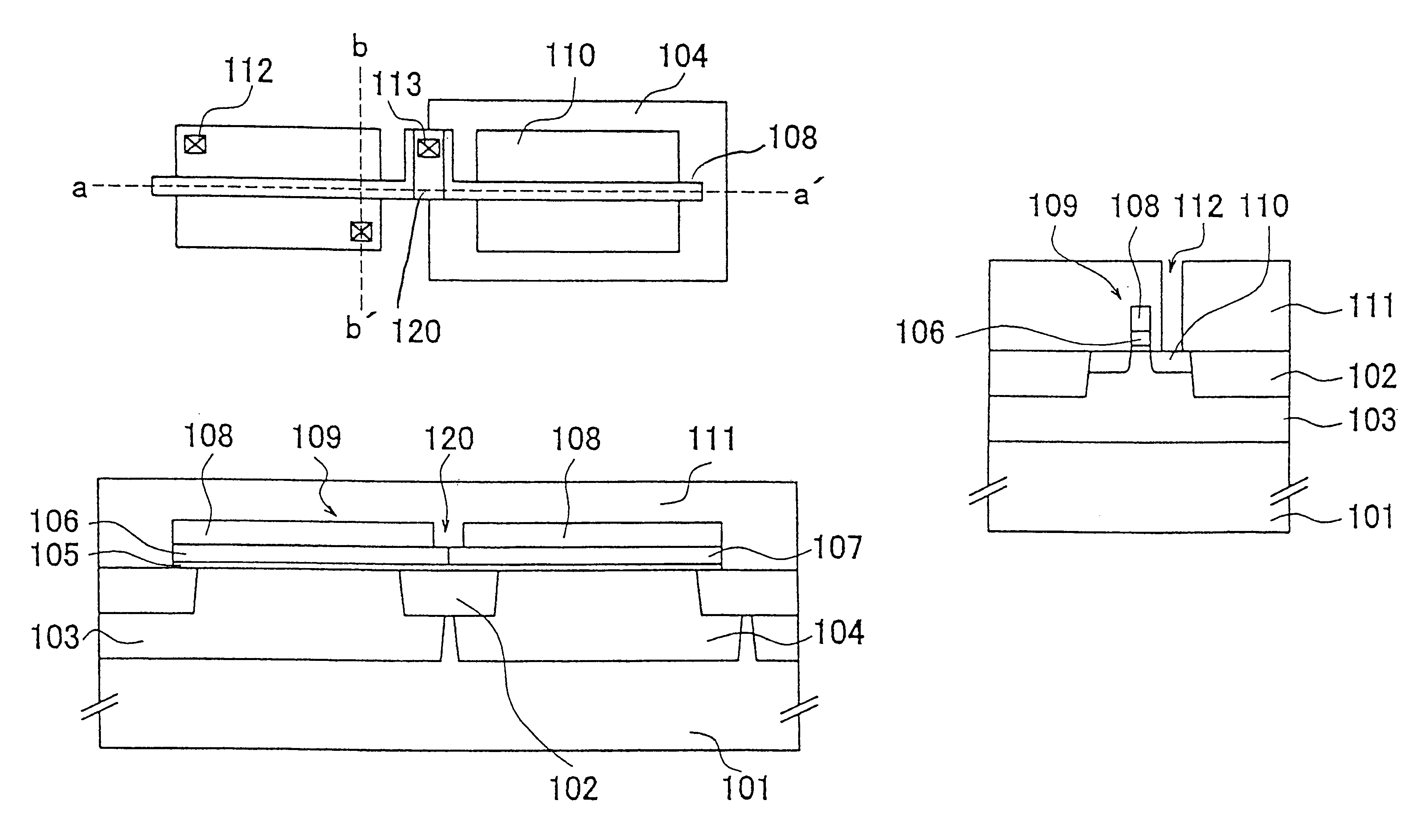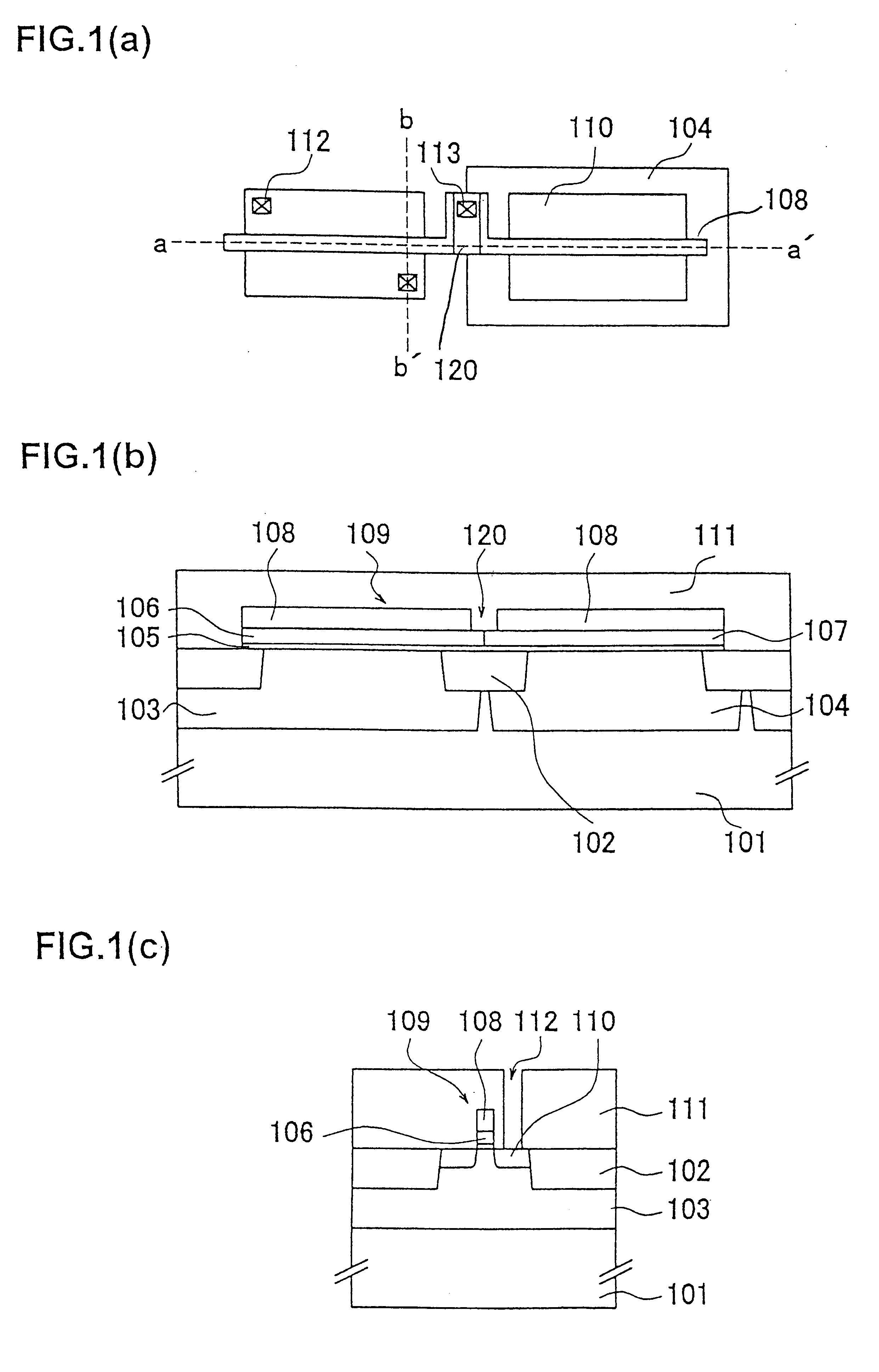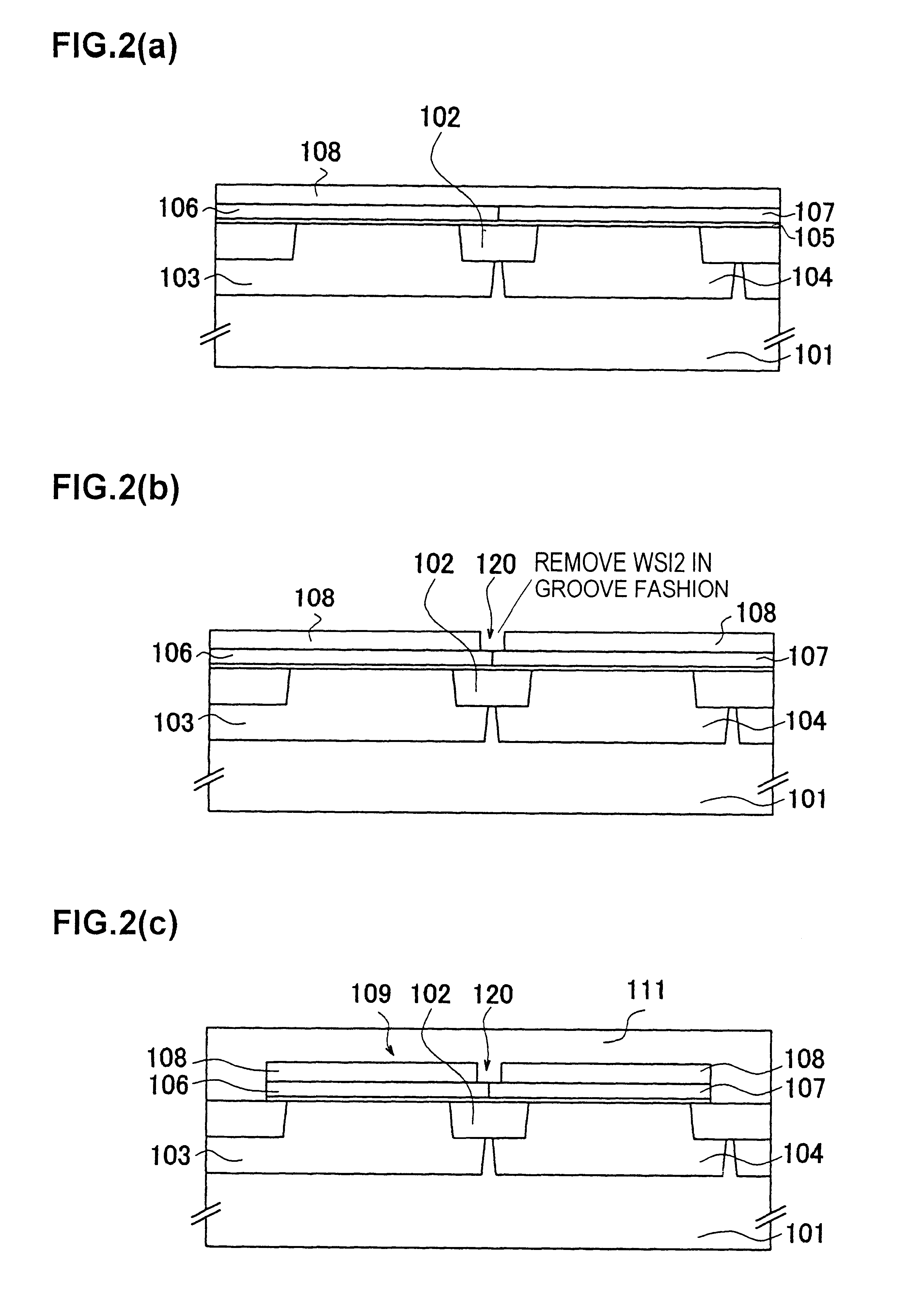Dual-gate CMOS semiconductor device manufacturing method
a semiconductor device and manufacturing method technology, applied in semiconductor devices, semiconductor/solid-state device details, electrical devices, etc., can solve problems such as disadvantageous degradation of semiconductor devices
- Summary
- Abstract
- Description
- Claims
- Application Information
AI Technical Summary
Benefits of technology
Problems solved by technology
Method used
Image
Examples
first embodiment
In the first embodiment, differently from the conventional semiconductor device, a groove region is formed in a WSi2 layer (or tungsten silicide layer) on a boundary region between an NMOS part and a PMOS part to thereby isolate the WSi2 layer on the NMOS part from the WSi2 layer on the PMOS part.
The constitution of a semiconductor device in the first embodiment will be described with reference to FIG. 1. FIG. 1A is a top view showing the constitution of the semiconductor device in the first embodiment. FIG. 1B is a cross-sectional view taken along line a-a' of FIG. 1A, showing the constitution of the semiconductor device in this embodiment. FIG. 1C is a cross-sectional view taken along line b-b' of FIG. 1A, showing the constitution of the semiconductor device in this embodiment.
First, as shown in FIG. 1, an element isolation insulating film 102 is formed on a silicon substrate 101 by, for example, an STI method. Impurities are injected into an NMOS part and a PMOS part by a photoli...
second embodiment
In the first embodiment stated above, description has been given to a case where the groove region is formed in the WSi2 layer on the boundary region between the NMOS part and the PMOS part and where the WSi2 layer on the NMOS part and the WSi2 layer on the PMOS part are isolated from each other. In the second embodiment, a CoSi2 layer (or cobalt silicide layer) having a low impurity diffusion coefficient and high conductivity is formed on a polycrystalline silicon layer on the bottom of a groove region on the first conductive layer.
Now, the constitution of a semiconductor device in the second embodiment will be described with reference to FIG. 3. FIG. 3A is a top view showing the constitution of the semiconductor device in the second embodiment. FIG. 3B is a cross-sectional view taken along line a-a' of FIG. 3A, showing the constitution of the semiconductor device in this embodiment. FIG. 3C is a cross-sectional view taken along line b-b' of FIG. 3A, showing the constitution of the...
third embodiment
In the first embodiment stated above, description has been given to a case where the groove region is formed in the WSi2 layer on the boundary region between the NMOS part and the PMOS part and where the WSi2 layer on the NMOS part and the WSi2 layer on the PMOS part are isolated from each other. In the third embodiment, an oxide film almost equal in height to a WSi2 layer is formed in a groove region.
Now, referring to FIG. 5, the constitution of a semiconductor device in the third embodiment will be described. FIG. 5A is a top view showing the constitution of the semiconductor device in the third embodiment. FIG. 5B is a cross-sectional view taken along line a-a' of FIG. 5A. FIG. 5C is a cross-sectional view taken along line b-b' of FIG. 5A.
First, as shown in FIG. 5, an element isolation insulating film 302 is formed on a silicon substrate 301 by, for example, the STI method. Impurities are injected into an NMOS part and a PMOS part by the photolithographic method and the implantat...
PUM
| Property | Measurement | Unit |
|---|---|---|
| insulating | aaaaa | aaaaa |
| conductive | aaaaa | aaaaa |
| height | aaaaa | aaaaa |
Abstract
Description
Claims
Application Information
 Login to View More
Login to View More - R&D
- Intellectual Property
- Life Sciences
- Materials
- Tech Scout
- Unparalleled Data Quality
- Higher Quality Content
- 60% Fewer Hallucinations
Browse by: Latest US Patents, China's latest patents, Technical Efficacy Thesaurus, Application Domain, Technology Topic, Popular Technical Reports.
© 2025 PatSnap. All rights reserved.Legal|Privacy policy|Modern Slavery Act Transparency Statement|Sitemap|About US| Contact US: help@patsnap.com



